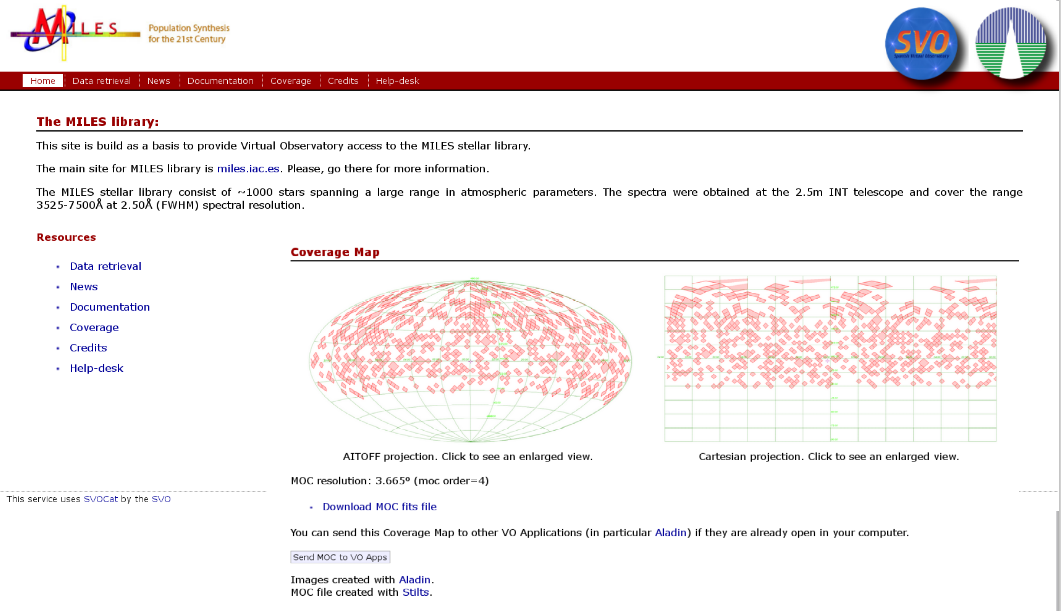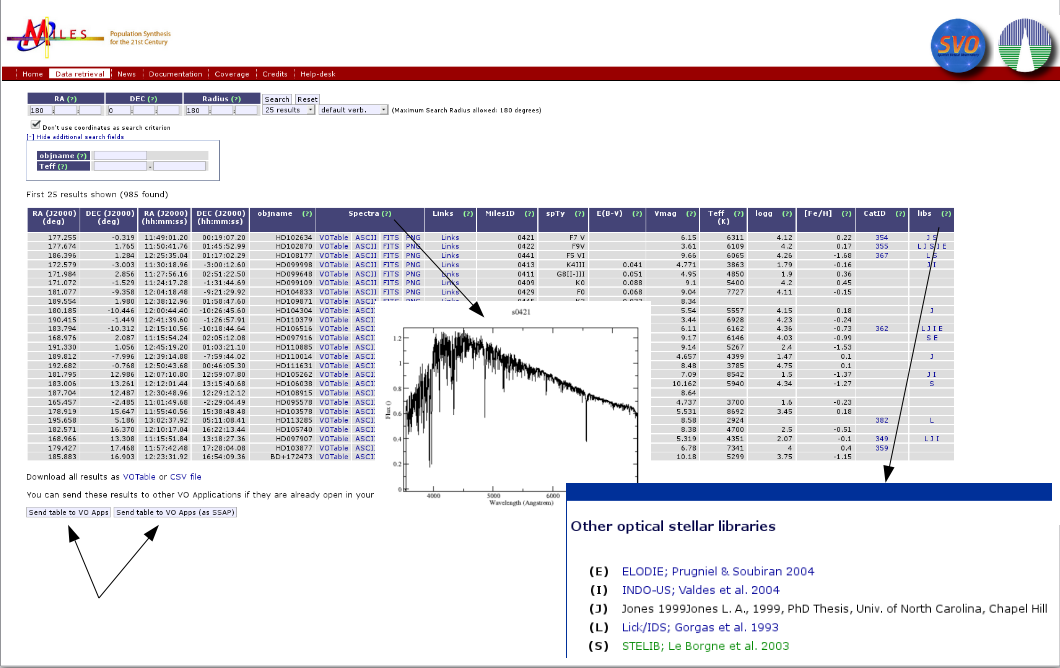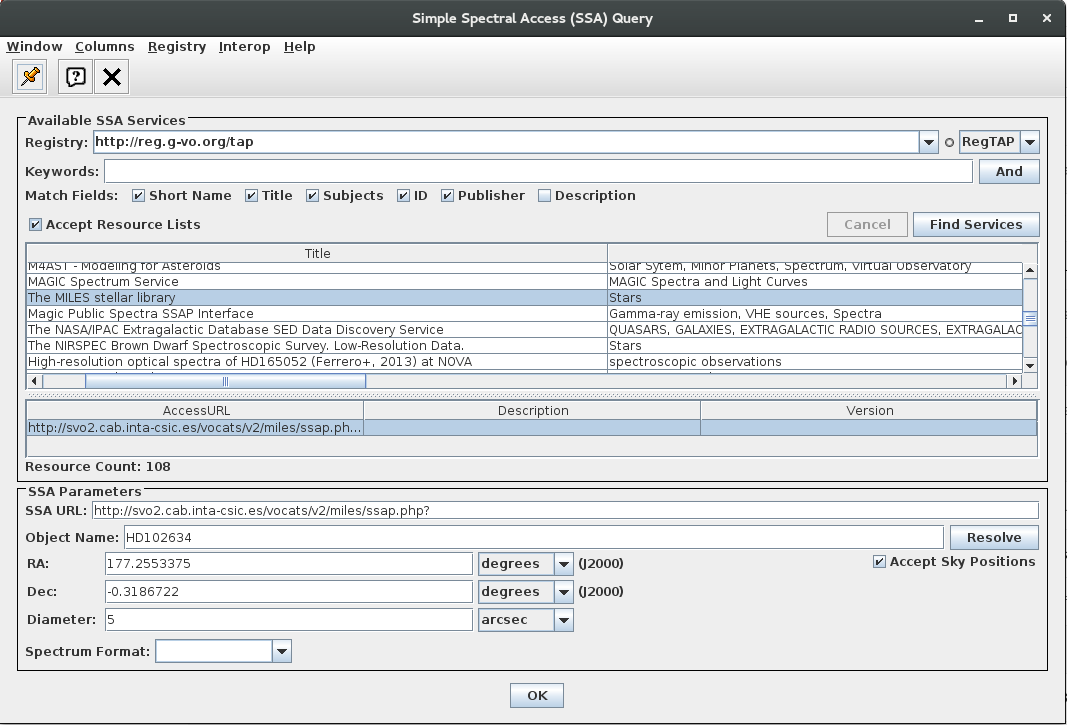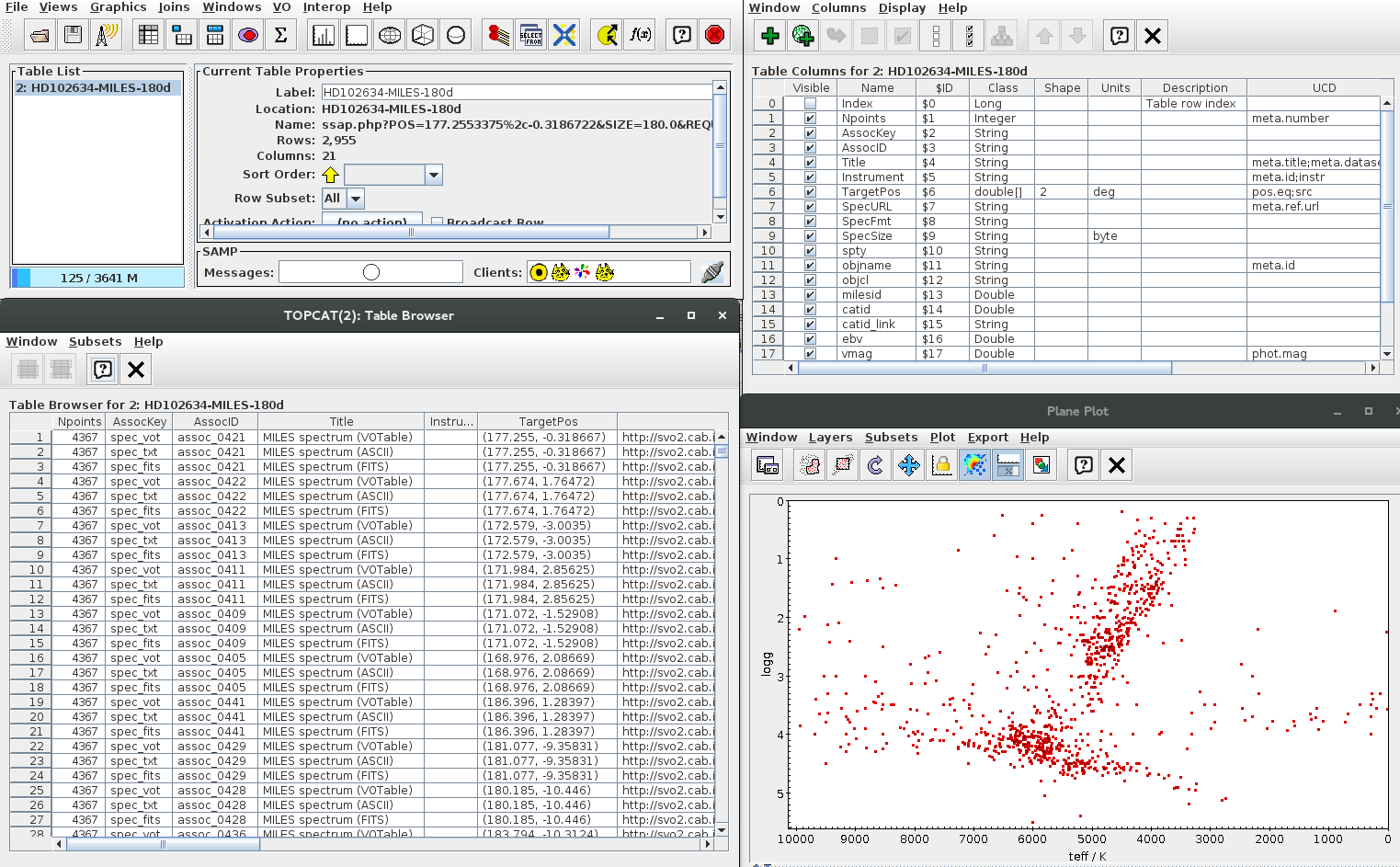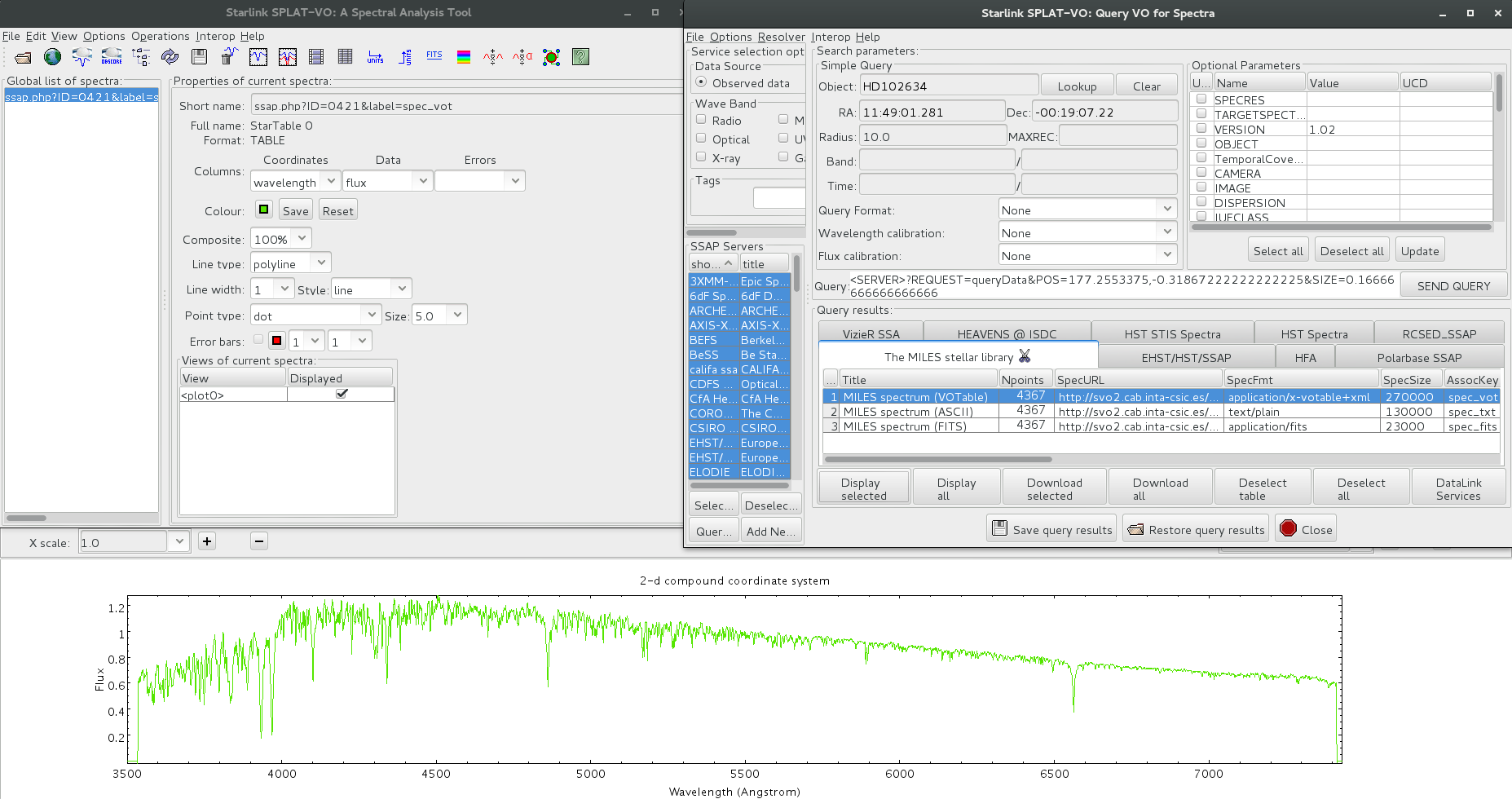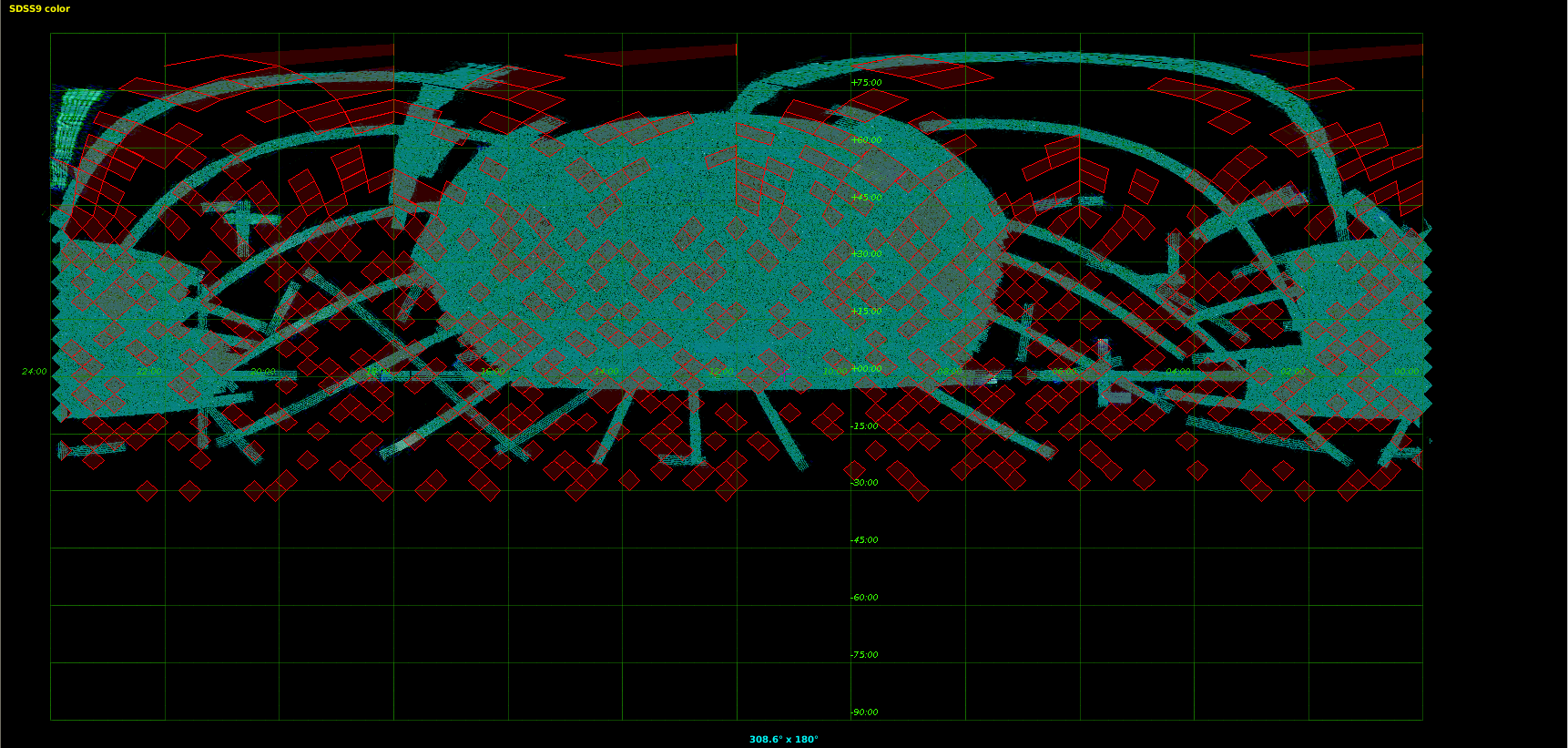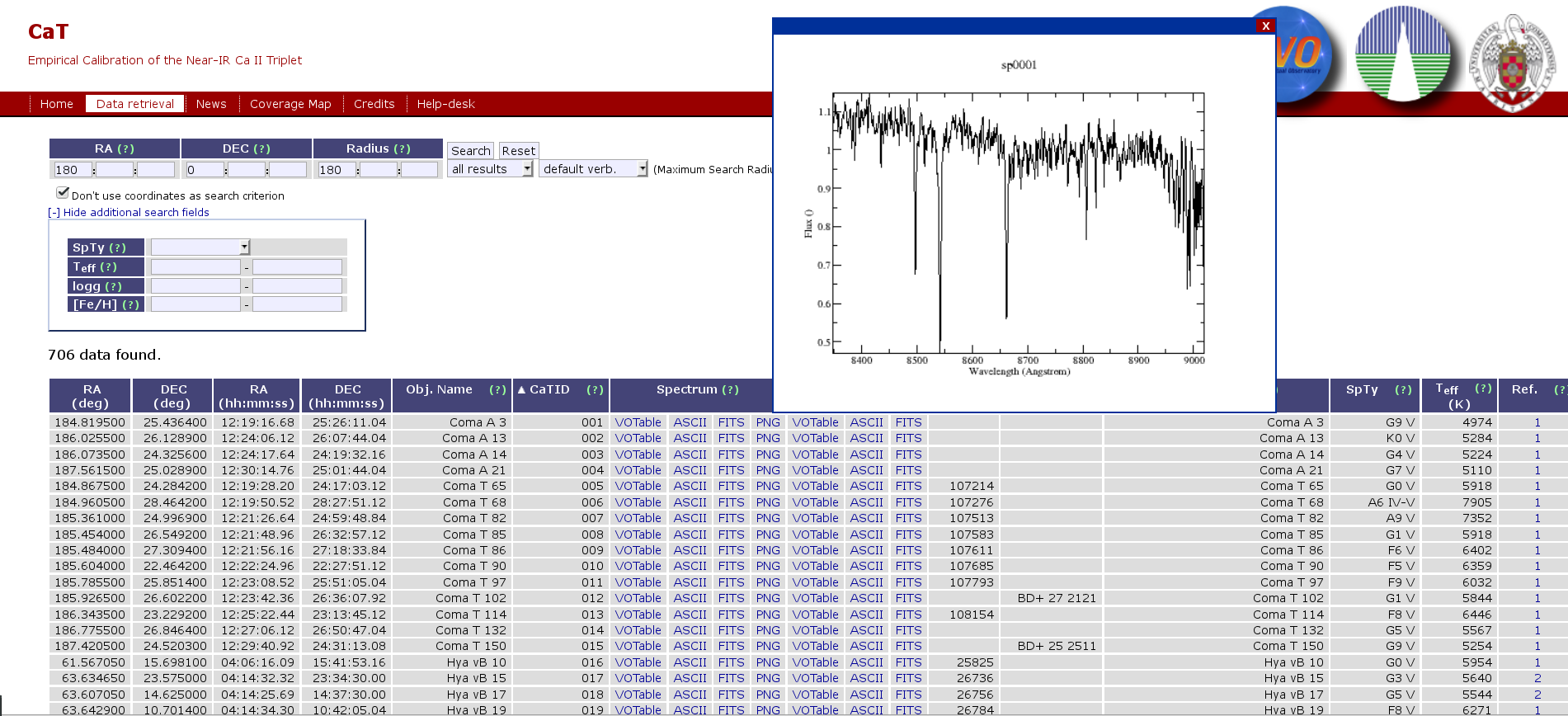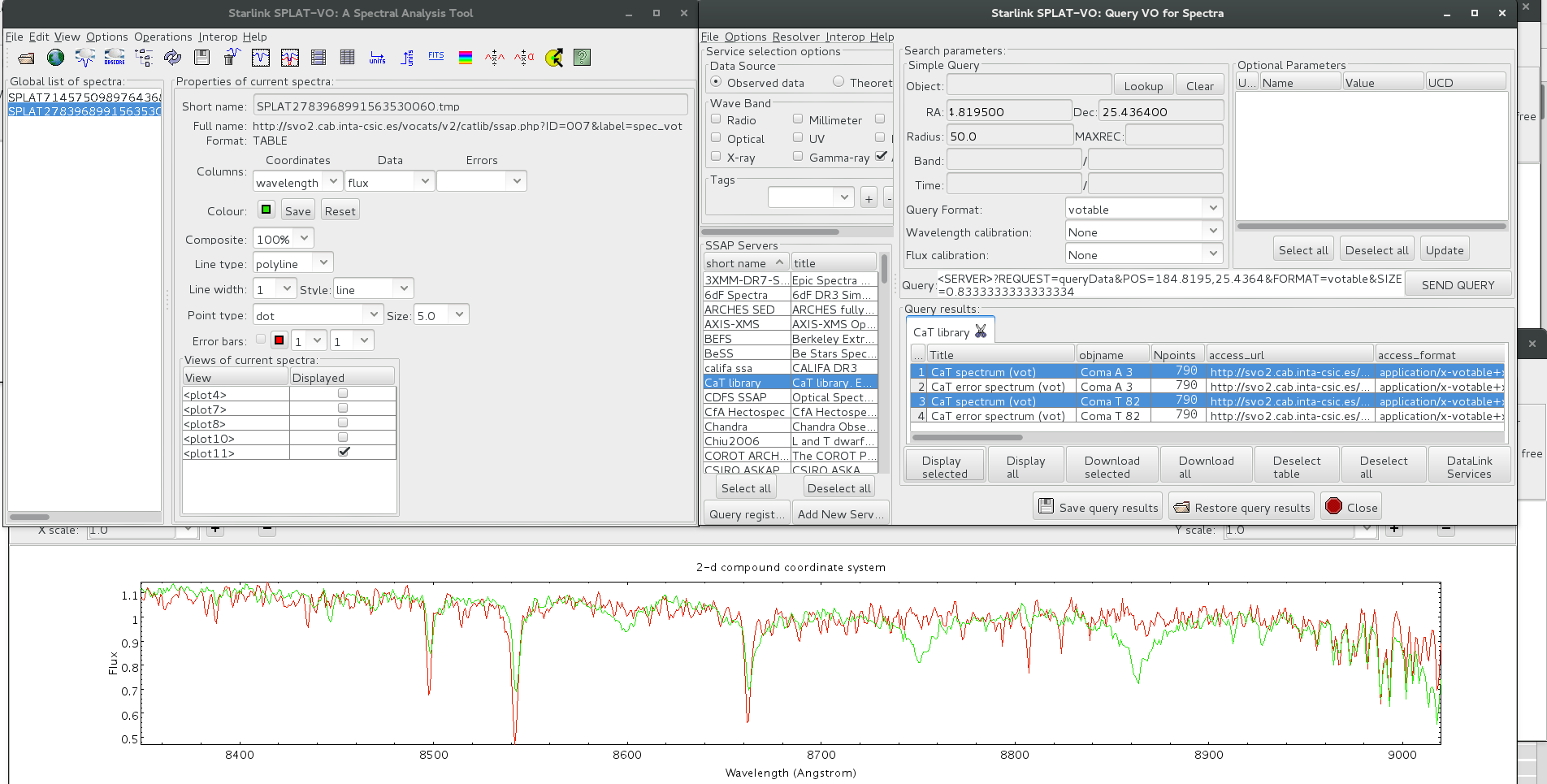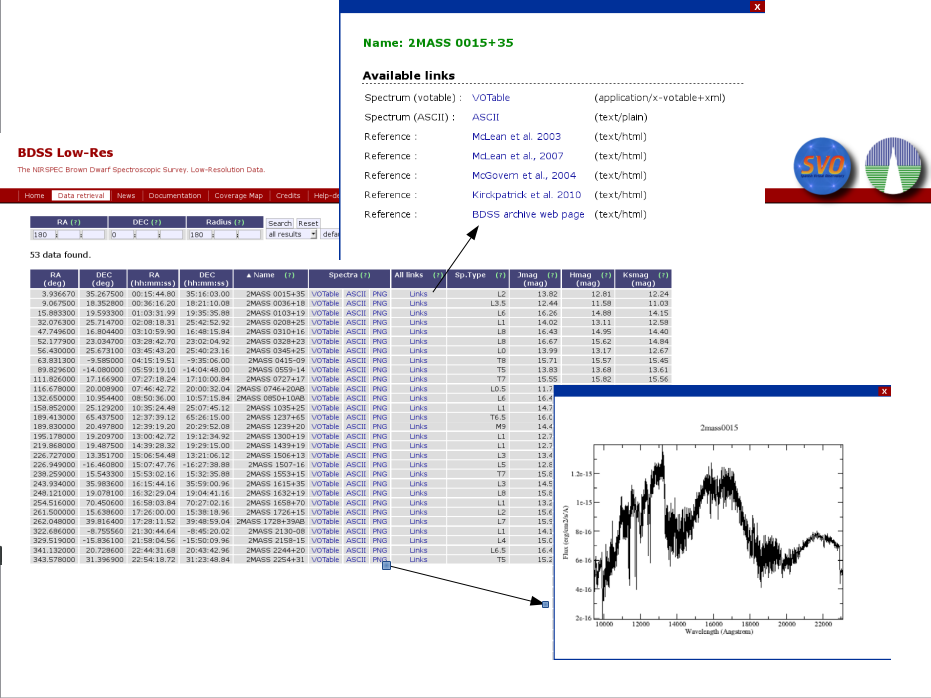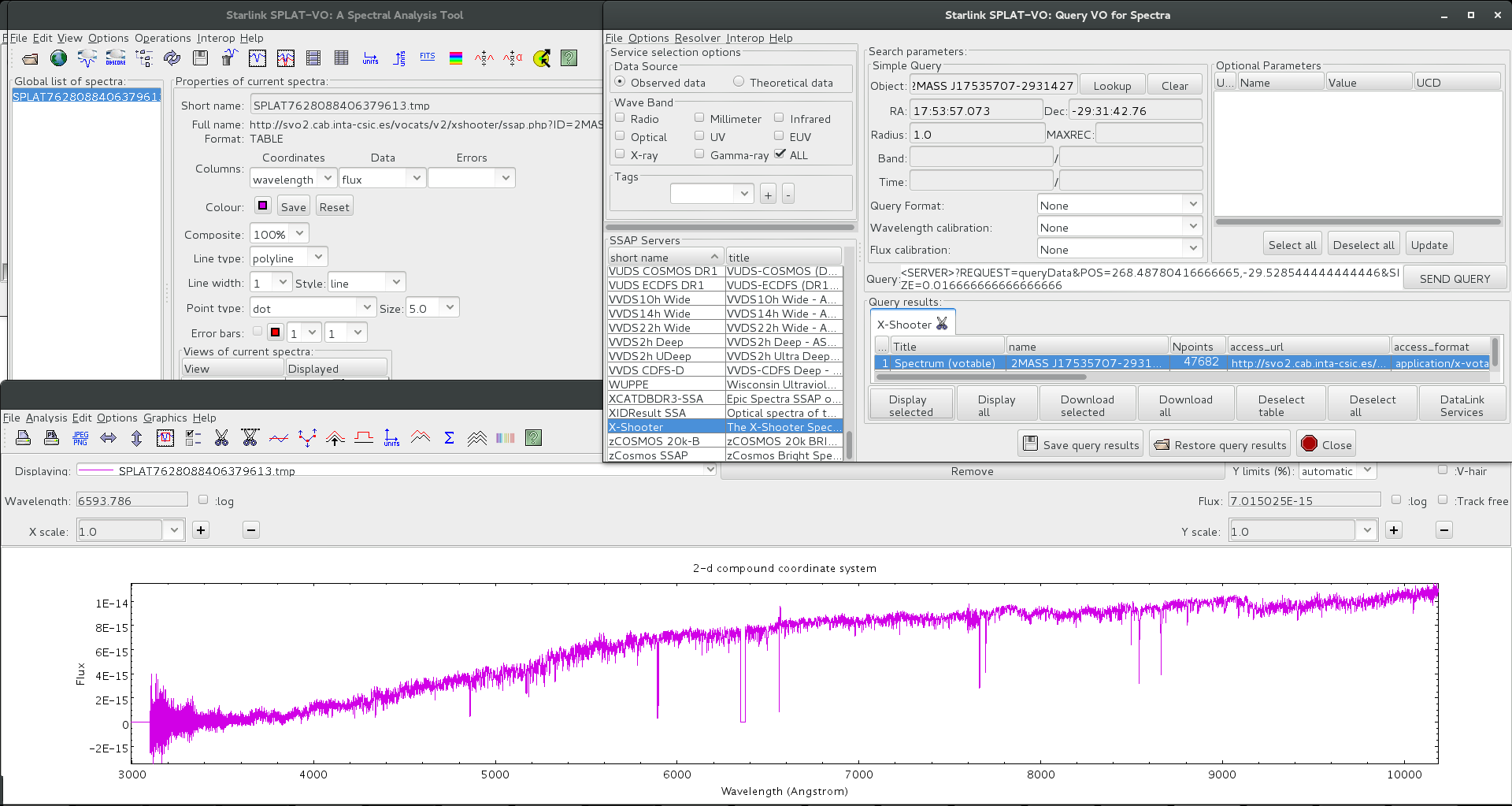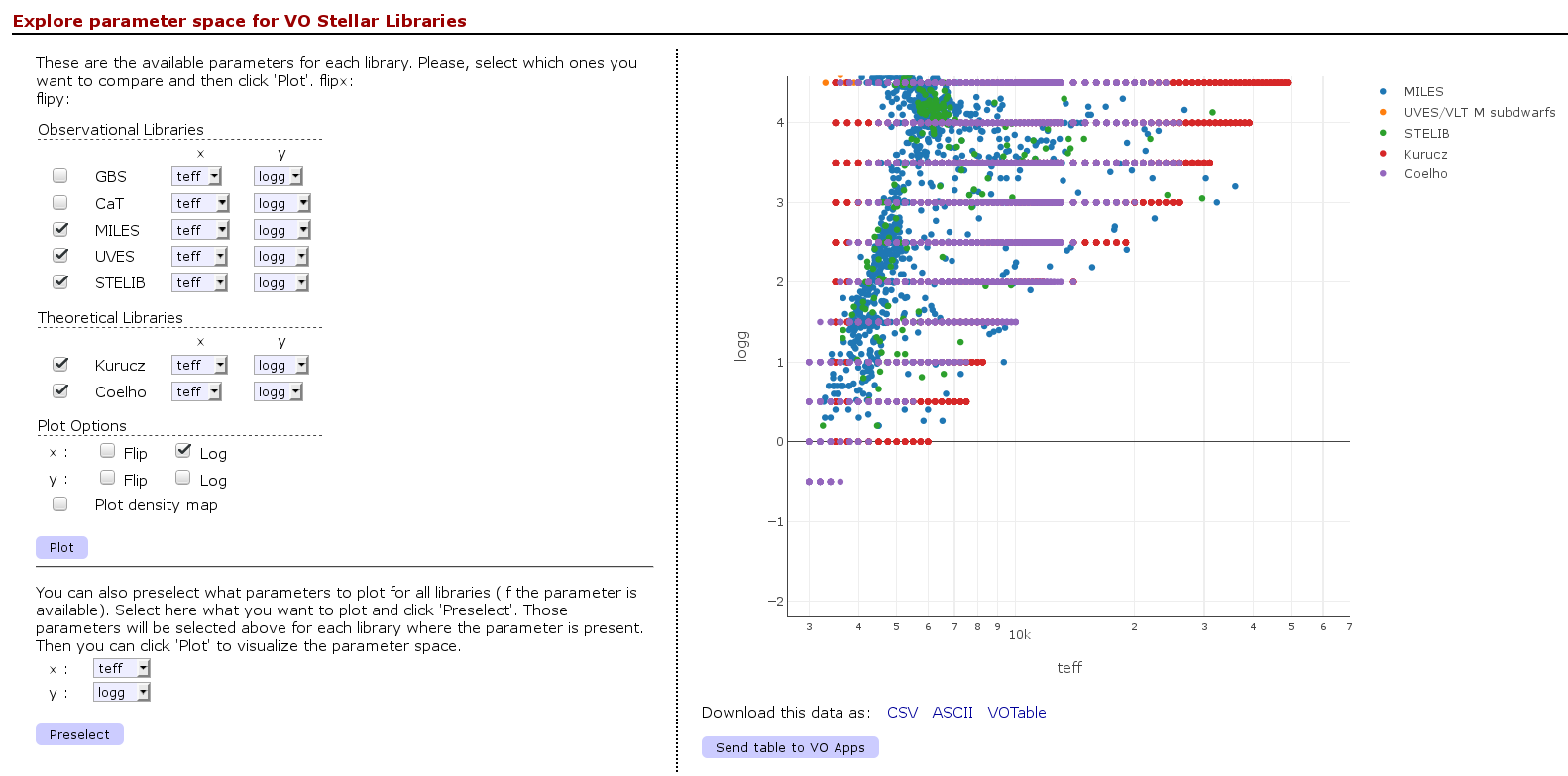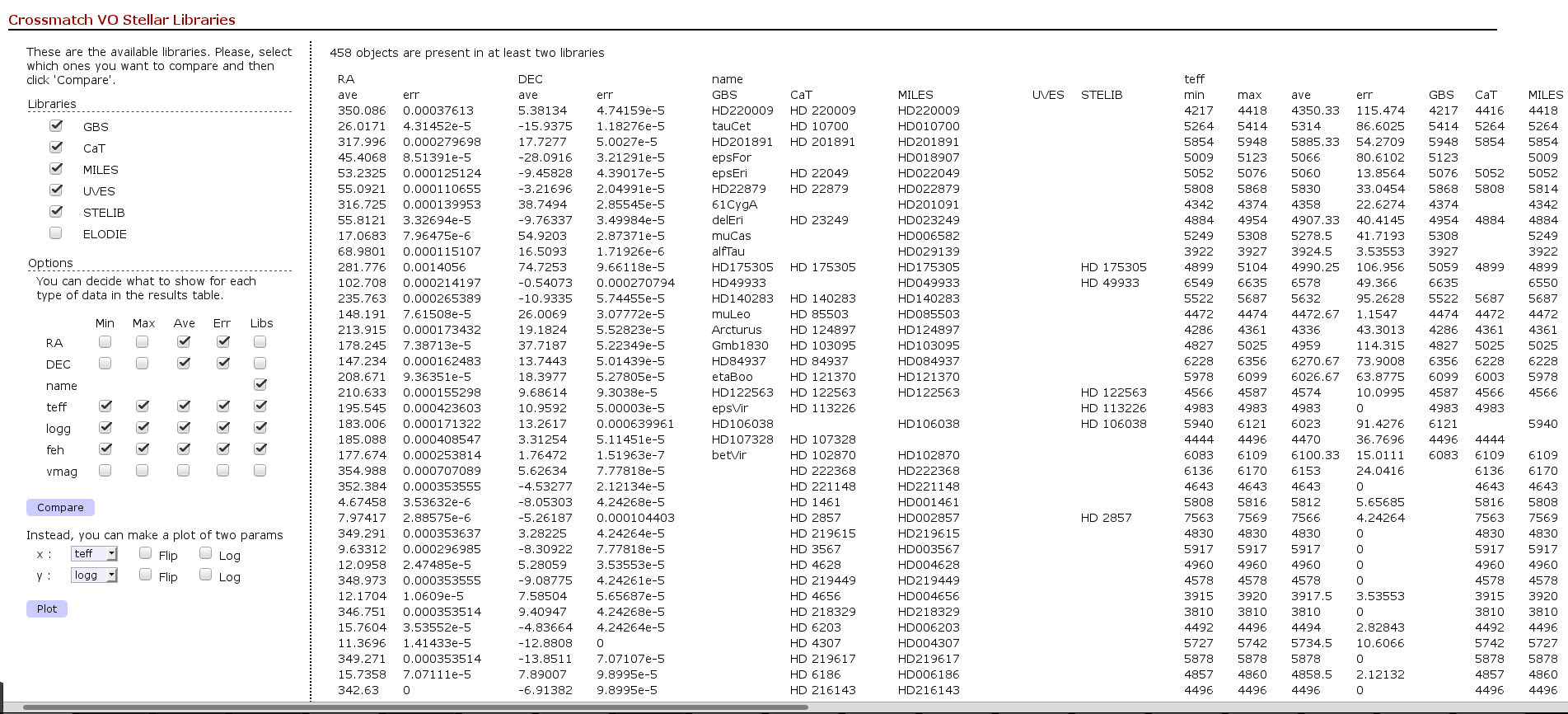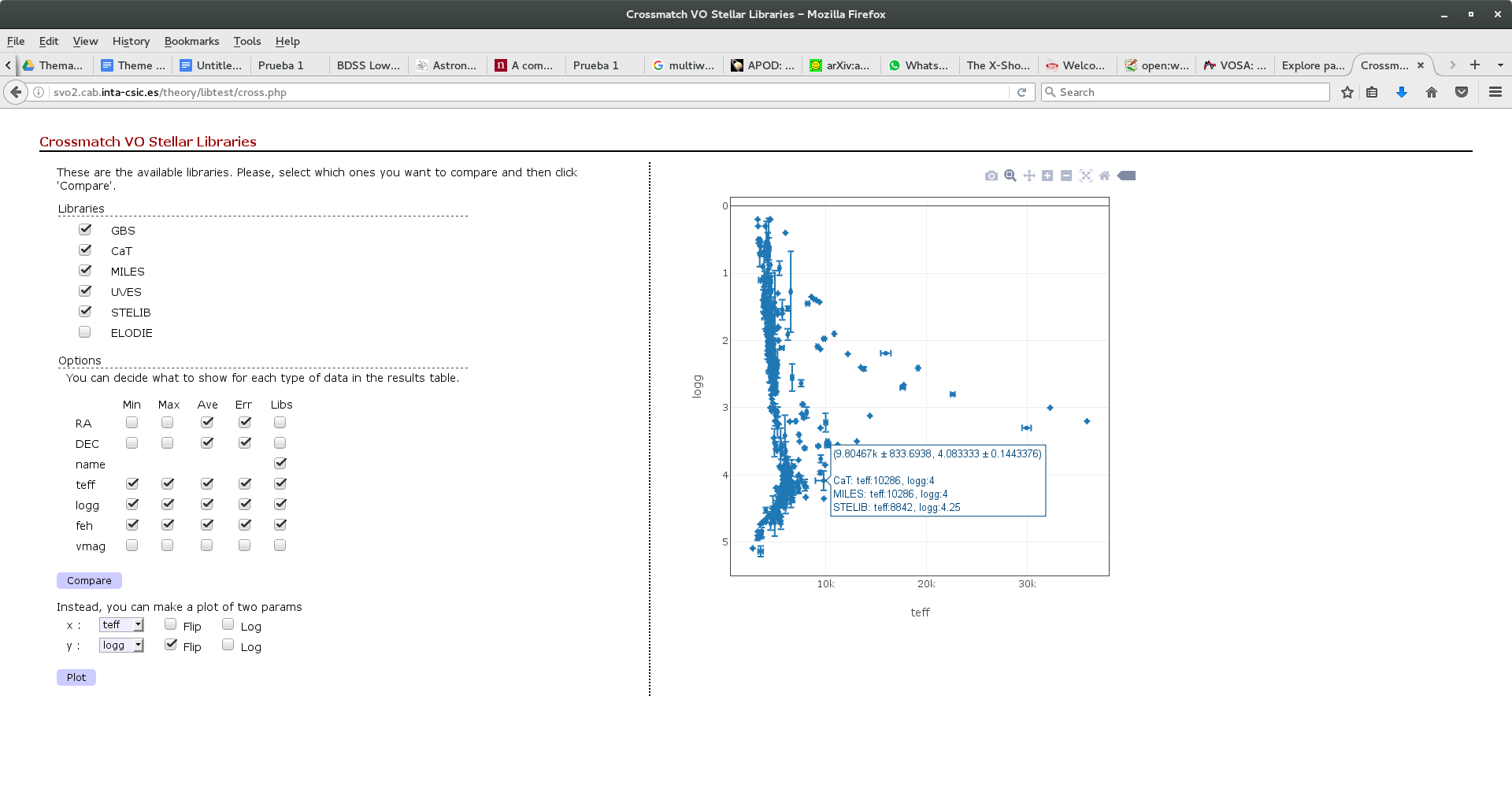|
||
 |
||
The dissemination of the libraries and their accurate descriptionSVO developments on stellar libraries (Carlos)
IntroductionObservational stellar spectral libraries typically provide heterogeneous information of a list ofstellar sources:
The management of all this information has traditionally been through web pages. The problem is that, although they are good to handle data from a single service, they failed when trying to compare datasets coming from more than one resource due to issues related to
The Virtual Observatory is an international initiative whose main goal is to provide an easy and efficient access and analysis of the information hosted in astronomical archives and services. In particular, Datalink is a VO standard that can be used to give an answer to the abovementioned problem as it provides in a single response all the information available for a particular object (tables, images, spectra,...) in a given VO service.. Below is a list with the tasks accomplished since the IWSSL meeting. Task 1: Implementation of the Datalink capabilities in the SVOCAT publishing tool
SVOCAT is a VO publishing tool developed by the Spanish Virtual Observatory to create a Virtual Observatory compliant service that allows accessing tabular data. We have upgraded SVOCAT with the implementation of the Datalink capabilities to manage datasets different from tables. Task 2: Use of SVOCAT to build VO services for observational stellar libraries.
We have used the upgraded version of SVOCAT to build new services for the following libraries. Task 2.1: MILESThe MILES stellar library consist of 1000 stars spanning a large range in atmospheric parameters. The spectra were obtained at the 2.5m INT telescope and cover the range 3525-7500Â at 2.50Â (FWHM) spectral resolution. More information on this library can be found in . Sanchez-Blazquez et al. 2006 and Falcon-Barroso et al. 2011 or in the MILES portal. SVOCAT has built the following services for MILES:
Task 2.2: CaTThis is a library dedicated to the empirical calibration of the Ca II triplet and stellar population synthesis modelling. It consists of 706 stars in the near-IR spectral range (from 8348 Â to 9020 Â with a FWHM of 1.5 Â) which spans a wide range of atmospheric parameters. A new set of near-IR indices which mostly overcome the limitations of previous definitions, being specially suited for the measurement of the Ca II triplet strength corrected for the contamination with Paschen lines, have been defined.
Task 2.3: BDSS Low-Res: The NIRSPEC Brown Dwarf Spectroscopic Survey.Low-Resolution Data. This site is build as a basis to provide Virtual Observatory access to the Low Resolution spectral library in the NIRSPEC Brown Dwarf Spectroscopic Survey (BDSS). The Brown Dwarf Spectroscopic Survey (BDSS), established in 1998 by Dr. Ian McLean in collaboration with Dr. J. Davy Kirkpatrick at IPAC, is designed to study near-infrared moderate-to-high resolution spectra for a large sample of low-mass stars and sub-stellar mass objects in the M, L and T dwarf classes. The BDSS was initiated following the successful first light commissioning of the Keck-II Near-Infrared Spectrometer (NIRSPEC) in April 1999.
Task 2.4: Gaia FGK benchmark starsThe Gaia FGK Benchmark Stars are a common set of calibration stars, covering different regions of the HR diagram and spanning a wide range in metallicity. It is a homogeneous library in the visual range (480-680 nm) of high resolution and signal to noise ratio (S/N) spectra corresponding to the 34 Benchmark Stars and 5 metal-poor candidates.
Task 2.5: SpeX Prism LibraryThe SpeX Prism Library is a repository of low-resolution, near-infrared spectra, primarily of low-temperature dwarf stars and brown dwarfs, obtained with the SpeX spectrograph mounted on the 3m NASA Infrared Telescope Facility on Mauna Kea, Hawaii. The data provided here have been obtained using the prism-dispersed mode of SpeX with resolutions of 75-200 and spectra spanning 0.65-2.55 microns in a single order.
Task 2.6: UVES/VLT M subdwarfsThis library presents UVES/VLT high resolution spectra of three late-K subdwarfs and 18 M subdwarfs. It covers the optical region from 6400A up to the near infrared at 8900A at a resolution of R~40000.
Task 2.7: L and T dwarf archiveThe service provides access to the spectra of L and T dwarfs presented by Chiu et al. (2006, AJ 131, 2722), Golimowski et al. (2004 AJ 127, 3516) and Knapp et al. (2004 AJ 127, 3553).
Task 2.8: STELIBThe objective of this Stellar Library is to build an homogeneous library of stellar spectra in the visible range (3200 to 9500A), including stars of all spectral types, luminosity classes and metallicity that can be observed from the ground with the current instrumentation. Most of the stars in the sample have already well determined metallicities. The spectral resolution is about 3A (FWHM).
Task 2.9: The X-Shooter Spectral LibraryThe X-Shooter Spectral Library is a collection of 3000-25000 A stellar spectra observed at a resolving power of R ~ 10 000 with the medium-resolution spectrograph X-Shooter at the Very Large Telescope (VLT).
Task 3: The spectral library comparison tools.To help Theme 3 ("Characterizing stars") in its analysis of the differences in reported parameters of stars included in different spectral libraries and in the definition of a final set of parameters per object, we have developed a couple of tools that allow an easy comparison among the libraries described in the previous section and the information they contain. The tools can be reached at: http://svo2.cab.inta-csic.es/theory/libtest/index.php and http://svo2.cab.inta-csic.es/theory/libtest/cross.php The first tool provides access to a sample of the stellar libraries reported in the previous section as well as to a couple of theoretical libraries. Adding new VO-compliant collections (both observational and theoretical) is not a problem from the technical point of view. The user can select the parameters and libraries to be compared and visualize the results, results than can also be downloaded in different format (CSV, ASCII, VOTable) or send to VO-tools using the SAMP protocol (Figure 22). The second tool allows to go a step beyond by identifying the objects in common in the selected libraries and providing the associated physical parameters (effective temperature, surface gravity,...), both the individual measurements as well as some basic statistical information (minimum, maximum and mean value and standard deviation) (Figure 24). At present the tool provides access to a subset of the stellar libraries described in Task 2 as well as to external services like ELODIE.
|
||
|
|
